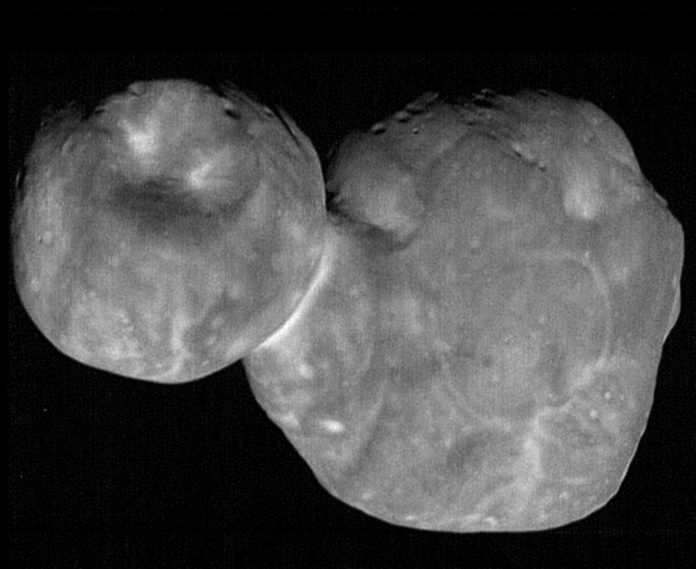The scientists behind NASA’s New Horizons spacecraft have released the sharpest possible view of the Ultima Thule. Just before making the closest approach to the object, the telephoto Long-Range Reconnaissance Imager (LORRI) offers a resolution of about 110 feet (33 meters) per pixel.
The pictures were taken from a distance of 4,109 miles, just six and a half minutes before the time of closest approach at 12:33 a.m. ET Jan. 1 (9:33 p.m. PT Dec. 31). By processing multiple images, the team was able to sharpen image resolution to about 110 feet per pixel.
New Horizons Principal Investigator Alan Stern, of the Southwest Research Institute (SwRI) said, “Bullseye! Getting these images required us to know precisely where both tiny Ultima and New Horizons were — moment by moment – as they passed one another at over 32,000 miles per hour in the dim light of the Kuiper Belt, a billion miles beyond Pluto. This was a much tougher observation than anything we had attempted in our 2015 Pluto flyby.”

Credits: NASA/Johns Hopkins Applied Physics Laboratory/Southwest Research Institute, National Optical Astronomy Observatory
“These ‘stretch goal’ observations were risky because there was a real chance we’d only get part or even none of Ultima in the camera’s narrow field of view. But the science, operations and navigation teams nailed it, and the result is a field day for our science team! Some of the details we now see on Ultima Thule’s surface are unlike any object ever explored before.”
John Spencer, deputy project scientist from SwRI said, “The higher resolution brings out many surface features that weren’t readily apparent in earlier images. Among them are several bright, enigmatic, roughly circular patches of terrain. In addition, many small, dark pits near the terminator (the boundary between the sunlit and dark sides of the body) are better resolved. Whether these features are craters produced by impactors, sublimation pits, collapse pits, or something entirely different, is being debated in our science team.”
Project Scientist Hal Weaver, of the Johns Hopkins Applied Physics Laboratory, noted that the latest images have the highest spatial resolution of any New Horizons has taken – or may ever take – during its entire mission. Swooping within just 2,200 miles (3,500 kilometers), New Horizons flew approximately three times closer to Ultima than it zipped past its primary mission target, Pluto, in July 2015.
Mission operations manager Alice Bowman, of APL, reports that the spacecraft continues to operate flawlessly. New Horizons is nearly 4.13 billion miles (6.64 billion kilometers) from Earth; at that distance, radio signals, traveling at light speed, reach the large antennas of NASA’s Deep Space Network six hours and nine minutes after New Horizons sends them. Follow New Horizons on its trek through the Kuiper Belt.
Look for these and other LORRI images on the New Horizons LORRI website this week. Raw images from the camera are posted to the site each Friday.
